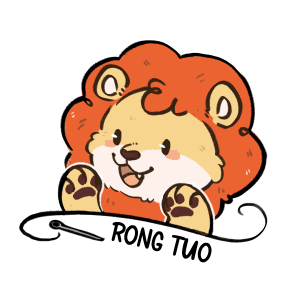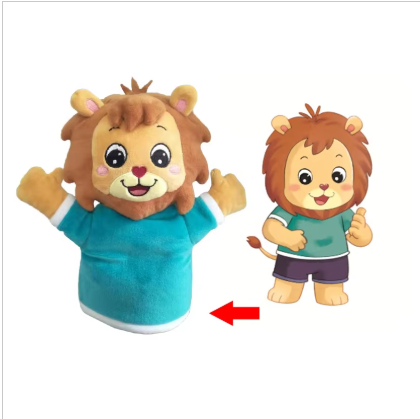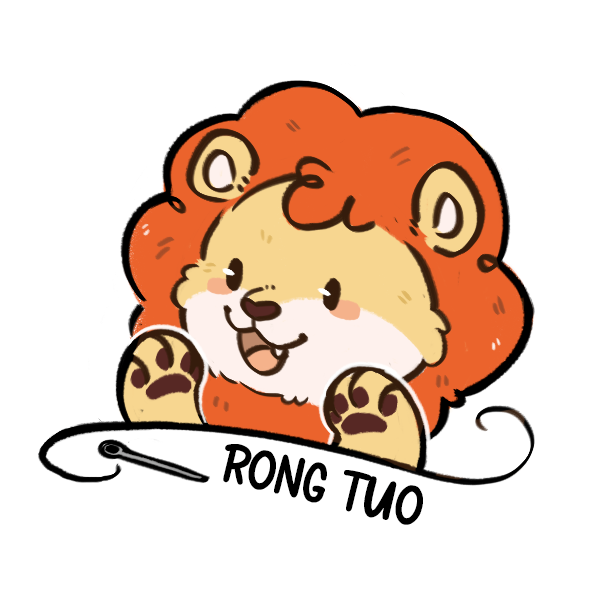Tagħmil ta' Kwalità tal-Materiali fl- Tojget Ġewwa tal-Ħsara
Fihira Tipijiet u Teksuri tal-Stoffa
Agħżil il-fażġa r-rita tagħmel differenza meta toħloq kwalità ta' bijiet qishom. L-ikbar parti tal-fornituri jużaw il-poliester, il-kotton jew il-velur, kull wieħed jibżen ruħu ħarġa differenti. Il-poliester isib in-nefsu minħabba li jiktar ħajjin, jirrifjuta l-kamur u m'ingħaqalx wara ħafna ħoss b’idejn – ideali għall-ġugarelli tat-tfal li jġibuhom ħafna. Il-kotton għandu dik l-imoħħija nies li ħafna nies jibżgħu, jagħti ġugarelli l-imoħħija naturali li tonqas kemm għall-idejn żgħar kif ukoll għall-kbir, għalkemm meħtieġ ħarsa addizzjonali biex t’imblukkaw il-pilling b’ħajt. Il-velur jista' jikkombina l-kumpert ta' vellut mal-faċilità ta' manutenzjoni tas-sintetiku, jibżen dik it-testura fina li verament tajjeb il-ġugarelli. Il-mod kif ġugarell jingħata jaffettwa ħafna lill-utenti; dik il-materja extra mlejjna sempliċement tajjeb l-attenzjoni u tagħmel in-nies jixtiequ jiplagħu aktar għalihom. Iċċekkja kumpaniji bħal Jellycat jew Maileg li bedew jinkludu materjal imġib mill-ġdid fl-prodotti tagħhom diġà. Din il-marki mhux biss qed jitkallmu dwar is-sostenibbiltà iżda qed jattwaw ruħhom biex jiksbu l-istqarrija tal-klijenti li jibżgħu ħafna dwar l-impatt ambjentali.
Iċ-Ċensur ta' Materjali tal-Filljar Premju
Il-kontenut tal-kwiet ta' dawk l-oġġetti mimli għandu l-impatt ewlieni fuq il-kumditu tagħhom u kif tantu jidumu. Il-fabbrikanti l-aktar jużaw il-fiberfill tal-polyester minħabba li huwa iefer u joħloq formi faċli, imma hemm diżorsi aħjar imma barra. Il-kotun organiku u l-latex naturali jidumu verament iktar bil-mod. Huma jippermettu lill-ġewwa tibqa' b'tagħmiru u forma tagħha, u dan ifisser li nies iktar żgħar jikbru b’esperjenza aħjar mingħajr il-ġewwa tinżel wara ftit ġimgħat fuq il-moffa. Il-ġewwa b'materjali ta' kwalità huma iktar legġieri, jibqgħu joħorġu tajjeb iktar u b’mod ġeneralment iktar gradevoli meta jinġabu. Fittex etiketti li juru l-ċertifikazzjoni GOTS jekk inti tfittex xi ħaġa verament ta' kwalità. Din l-istandard tifisser li l-materjali jikkonformaw ma standards ambjentali u ta' sigurtà riguriżi. Il-genituri li jixtru b'attenzjoni se jnotaw dawn id-differenzi, speċjalment meta jinkonparaw il-ġewwa waħda bl-oħra fil-ħanut.
Ir-Rekognizzazzjoni ta’ Sertifikati Siguri (OEKO-TEX, GOTS)
Meta tħares lejn il-bijiet ta' pelle, il-kertifikati bħal OEKO-TEX u GOTS huma importanti ħafna għall-kwalità u s-sikurezza. Il-lejbel OEKO-TEX prattikament ifisser li l-prodott mhuwiex fih substanzis perikolużi, li jibni ġid fiduż li l-ġenituri jafu li t-tfal jistgħu jilgħu b’sikurezza mingħajr irritazzjoni tal-ġilda jew problemi ambjentali. Il-GOTS jmur aktar minn hekk li jivverifika jekk il-kotton ikun verament organiku. Din tivverifika kif il-proċess kollu tal-manifattura jaffettwa kemm il-bnedmin kif ukoll l-ambjent. Statistiċi ħafna drammaturġiċi juru li ħafna bijiet ma jaqblux t-testijiet bażiċi tas-sikurezza, għalhekk dawn l-iktiġijiet isiru s-soltu importanti biex jipproteġġu t-tfal. Sib dawn il-kertifikati billi tibda tiftish fuq l-ikkuppari jew fuq it-tagġijiet fuq il-bajja stess. Ikkompli taf x'inhu kwal logo jirrappreżenta u x'inhu l-istandardi li jidħlu fih. Meta tkun taf dan, il-kunsumatur jista' jixtri bijiet li jikbru ħsieb għat-tfal u l-ambjent.
Tifforża fuq il-Konstruzzjoni u l-Artiżjanatà
Ispettar il-Ftittix u s-Siduri tal-Seam
Il-kulmiss tajjeb verament jaffettwa kemm il-ġewwa tistgħu jidumu qabel ma jinqasmu. Il-manifatturi normalment jużaw metodi differenti bħall-kulmiss tal-lockstitch jew il-chain stitch biex jiżguraw li l-kulmien jistgħu jidumu kontra l-pressjoni u l-leġexxar brutali li nies iktar żgħar jagħmlu. Meta naraw ftitijiet miftuqa jew kulmien li jinqasmu, dan diġà huwa sinjali li l-ġewwa ma ġietx imfassla sew, u dawn l-erori normalment isiru aktar serji b’ħadet id-darba. Xi ftitijiet industrijali juru li ġewwa bil-kulmiss qawwi jistgħu jidumu s-snin iktar meta mqabbla ma ġewwa oħra fejn l-opra ma kienx preżenti. Il-ġenituri jafu dan minn esperjenza – ħafna ħafna minnhom saru swew li ġewwa bil-kulmiss ħafif jinqasmu wara ftit xahar bħala parti tan-normal play.
Verifikar Attaccamenti Sigurti (Oċċi, Nasi)
Kif ġewwa l-occhi u n-nfxi jikbru jikbru l-ikbar differenza għall-sikurezza u kif tajjeb il-ħajjin jikbru jidumu. L-ikbar parte tat-tnejn tużaw butunijiet, ricami jew kusitura imbottita biex iżommu dawn l-oġġetti minn ma jilħqu, li jnaqqas ir-riskju ta' ġid ta' periklu ta' ħanqa. Jekk xi ħaġa ma tkunx imwaħħla sew, tista' ssir problema reali għall-ħaba bħier li jikbru jġibu kollox fil-buzzejiet tagħhom. Kull wieħed li jixtri ħaġa ta' peluwa jkun wisq li jagħmel verifika tajba qabel ma jagħtiha. Iċċekkja sew l-iktar dettalji tal-wiċċ u ara jekk jibqgħu fissi meta tisir tirata ħafifa. Verifika veloċi bħal din tagħmel differenza kbira biex iżomm il-ħin tal-ludija s-saltness għal kulħadd involut.
Verifikazzjoni ta' Simmetrija u Prezzizzjoni tad-Dezign
Filwaqt li jum jaslu għall-ġewwaniq tal-plush, li jkunu simmetriċi verament importanti għal kif jidheru ħarfin. Jekk l-isfel jingħataw sew u l-wiċċ mhux meżjin, in-nies biss jinsibu l-ġewwana iktar affaċċjanti komplessivament. L-ikbarija tal-persuni se jnotaw meta xi ħaġa tidher immejjla jew mfabbrika b’mod ħażin. Meta nħarsu lejn eżempji reali, nassabu li l-kunsumaturi tendu jinklinaw lejn il-ġewwani fejn kollha jikkorrispondu sew. Esperti tal-industrija spissu jitkellmu kif detajli żgħar jagħmlu differenza kbira fil-għed sodisfazzjoni tal-klijent. Il-ġewwani li għandhom simmetrija tajba biss jingħataw l-impriess iktar sew fil-moħħ tan-nies li jixtru, u dan huwa r-raġuni għaliex il-manifatturi jispendu ħafna ħin biex jingħataw dawk l-elementi tad-disinn b'mod preċiż.
Ħafna ta' Prioritizing Standards tal-Aħjar
Kumpljenza mal-Reġolamenti Internazzjonali (EN71, ASTM F963)
Huwa importanti li l-plush toys jikkonformaw mal-istandards internazzjonali tas-sigurtà bħal EN71 u ASTM F963 biex jiġu evitati perikli għall-istessit. Id-dispożizzjonijiet prevedu verament testijiet riguriżi li jinkludu l-aspetti mekaniċi tal-ġid, il-preżenza ta' sustanzi ċimiċi potenzjalment perikolużi u s-susċettibilità għall-ħruq. L-EN71 fl-Ewropa, pereżempju, titlob verifikas dwar possibbiltà li jinħalqu partijiet żgħar li jistgħu jitfakku u tivvaluta anke l-possibbiltà ta' preżenza ta' sustanzi tossiċi. Rajna ħafna każijiet fejn ġew irritirati ġid minħabba li ma superawx dawn l-istandardijiet u kkonċernew sigurtà tal-istessit. Il-ġenituri li jixtiequ jivverifikaw jekk il-ġid tagħhom jikkonformaw mal-istandards, għandhom isejħu l-istampi tal-ċertifikazzjoni direttament fuq il-kaxxi. Jekk il-info m'inti ċara, ma titmex tista' tikkuntattja l-impjiega direttament u tista' tista' mistoqsijiet dwar ir-rekord tas-sigurtà tagħhom.
Ħafna minn Perićoli ta' Ingħad dwar Parti Żgħar
Partijiet żgħar fit-txurijiet bħall-perlin u l-buttuni jippreżentaw periklu reali ta' ġid biex it-tfal jingħaqdu, li l-ġenituri jridu jikbru ħilhom. Dawn il-komponenti spiss jinħalqu waqt il-leġex normali, u jippreżentaw perikli serji għall-adoleskenti ta' inhar minn tliet snin. Meta tixtri ħabta jew taħżiż bl-ajru, hemm sens li tivverifika kif il-kollegament huwa sigur u jekk xi partijiet jistgħu jidħlu fit-tampu ta' tfil. Il-Kummissjoni Amerikana għall-Sikurezza tal-Prodot li jikkonsuma jirrapporta ħamminijiet ta' viżiti fl-istazzjonijiet tal-erba' kull sena li jikkonċernaw partijiet tat-taħżiż li jikkawżaw problemi max-xemx. Nħarsu malajr fis-sit web tagħhom turi kif ħafna famijiet kienu affettwati minn din l-assunt, u għalhekk tagħżija attenta tat-taħżiż hija assolutament essenzjali għall-sikurezza fid-dar.
Ħajja li Materjali Ma Jkunu Toksiċi
Dawk li jidħlu fil-faċċata tal-ġewwani lilluminati jikkupru ruħhom ħafna meta jinstab li jitqiegħed iż-żgħar fis-sikurezza, speċjalment rigward il-fatturi effettivi li minnhom huma magħmulin. Iż-żgħar jipperpejaw kollox fl-imsawi tagħhom, allura l-ħol użanti ta' materjali li mhumiex tossiċi għandha sensu ħafna peress li jikbru ħafna ħin jikbru l-ġewwani lilluminati u jidħluhom qrib ruħhom. Il-kottoni organiku u ċerti tipi ta' poliestru b'ċertifikat huma jistgħu jitqiesu bħala għażla tajba peress li ma jkunux fiha dawk is-substanzi ħażini li ninnifkru kollha. Il-gruppi li jassiguraw is-saħħa kienu jtwieled fuq il-presenza ta' sostanzi perikolusi ħafna darba. Għalhekk il-konsumaturi lesti jivverifikaw l-ekżistenza ta' ċertifikazzjonijiet minn parti terza qabel jixtru xi ħaġa għall-ikbar. Ħaġar veloċi lejn l-etiċetti jista' jisparagħ il-komplessitajiet futuri.
Valutazzjoni tal-Durabbiltà Lill-Termiku
Prova tal-Funtionalità Maqin-Washable
Il-bijiet tal-peluche li jistgħu jinfetqu fl-ixxer wara jġibu ħafna faċilità meta jkunu jġibu ħajjin, u anke huma iżdur iktar minn dawk li m'humiex ważżabili. Meta l-bijiet jitnu b'regolarietà, jibqgħu ġodda minflok isiru qattini u jibdew jinżlu minħabba l-akku tal-ħol. Il-manifatturi magħrufa bħal Jellycat u Gund jafu dan sew, li għalhekk jinkludu għidiet ta' tiftix dettaljati direttament fuq l-imballaġġ jew is-sit web. Lil-wlied inħob l-istories li jisimgħu fuq il-web fejn l-animali tal-peluche preferiti tat-tfal jinżlu mill-ixxer kif ġodda wara ħafna ċikli. Il-fatt li dawn il-bijiet jidumu għal ħafna tiftix ripetut jiddikjara ħafna dwar kif huma mejjla tajjeb u ddizajnati għall-użu reali.
Evaluazzjoni tal-Resistenza tal-Bidu Fil-Temp
It-tul tal-ġid il-plush davvero jiddependi minn dak li huma mefsumin minn. Il-fabrika ta' kwalità tajba u l-imbottitura proporzjonata tagħmel il-fattur differenza meta jinstab ruħu qiegħed jirriżisti l-attrizzjoni. Affarijiet bħal kif il-materjal jistenni t-taħkim u kif il-ġid irrieżed minn fibra għall-aħħar darba jiddeċidu jekk il-ġid se jżomm il-forma tiegħu wara li ġie ppreżentat għall-logħob. Studji juri li materjali aħjar ġeneralment jidumu madwar tliet sa ħames sena b'utlizz regolari qabel ma jidheru sinjali ta' ħsara sinifikanti. Il-matri jekk jogħġbuhom li l-favoriti tal-ħawan jidumu iktar għandhom jaqraw il-lebels tal-ħol imsemmija sew u jibtekru marke magħrufa għall-użu ta' materjali solidi fil-proċess ta' kostruzzjoni minflok jagħżlu l-iktar għażla bil-faqs iktar reżistenti.
Monitorja tan-Nifsija tal-Riempiment Duppi l-Użu
Ħafna dramm tinsab fil-kaxxi tiegħu biex iduraw il-karattru tas-semmuns tas-semmuns u jibqgħu siguri b’ħajt lit-tul. Meta jibda l-iktar kaxxi jitkelmu, spiss nara ħolqien bħal ħolqien jew postijiet fejn il-kaxxi ġew imqabba. Dawn il-bidliet jagħmlu l-lukk inqas apprezzabbli biex jitqiegħdu u jibqgħu kompletament. Biex il-kompanijiet tal-ħalib jibqgħu jidheru u jġibu tajjeb, agħtihom ħafna ħruq minn ħin lejn. Ixxerrihom xi dar ta’ ħajt iktar minn postijiet fejn hemm ir-riħ li jikkawża ħolqien tal-muffa. Ħafna nies jinsibu li hija ħiliet li tibdel kull semmuns li l-forma tagħha ġiet distorta ħafna minħabba li l-materjali logħob jistgħu jippreżentaw perikli, partikularment madwar tfal li spiss jibżgħu kollha fid-dent. B’verifikanti regolari u xi ħafna rutini ta’ ħarsien bażiku, dawn il-karattri meqruda se jibqgħu jipprovdu ħolq għal iktar tul minn dak li jkunu jagħmlu.
Mistoqsijiet Mħallsa Spiss
X’jikollok is-saf id-dahar għall-tojget ċiedli?
Il-poliestru, il-kottoni, u l-velour huma scelta popolari għal dawn l-ġdidija li jikkarakterizzaw minn duri, widna, u tekstura luksuża.
Għaliex certifikati ta' sigurtà huma importanti għall-tojget?
Certifikati kif OEKO-TEX u GOTS jassigguraw li tojget ma jkollhomx mibda danninji u jagħmlu biex jgħibu standardi strett ta' sigurtà u ambientali.
Kif jistgħu nagiċċja l-durata ta' viċċ tal- pluši ?
Agħżel ġogħlijiet li jkunu mil-karatteristiki li jistgħu jinkura bl-mašin, farċa ta' qualità uggjana, u jSegue l-instruzzjonijiet tal-ħraġ meticulousment għall-estensjoni tal-vita.
Li għandek nieqsa meta tixxerja pluši ?
Ispetti l-qualità tal-stoffa, il-farċa, is-safji tal-ċertifikati, u l-attaxxi securi biex tigiż ħsara u duri.


